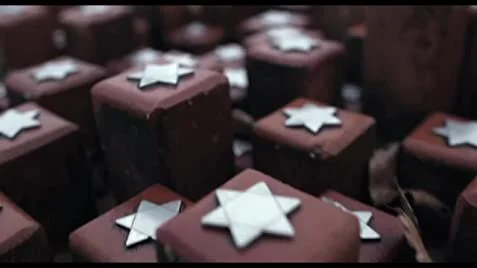Through her diary and art, Helga Weiss tells her story of survival and coping through the Holocausts. After being transported to Terezín at age 14, Helga clung to writing and art, depicting everyday life in the camp. Today her diary and art are known by many and has reached millions.
In an interview with BBC TV Helga Weiss described how much they were allowed to bring to the camp. "We were allowed 50 kg of luggage, so we took just our clothes and something important to us. I took two very small dolls, a pad, watercolors and crayons," Her art became a way of communicating and processing her experiences and feelings in the camp.
Helga's art was greatly encouraged by her father Otto Weiss. After receiving a picture of children in snow, he urged his daughter to "draw what you see". Her art mirrored her diary as she began to illustrate everyday life in the camp. Her art would prove as a medium of understanding the would she was living in.
Her drawings depicted the horrors of Terezin like rations, disease, the lice and bed bugs. The pictures show queues for food; a bleak, basic washroom; a girl ill with tuberculosis; people on stretchers; bread transported in a hearse marked "Welfare for the young". Helga did as her father told her and would later think of the snowman drawing as the first picture, she drew in Terezin, but also the last drawing of hers as a little girl.
Helga would later be sent to four camps, Terezin, Auschwitz, Freiberg, and Mauthausen. In the days leading up to her deportation to Auschwitz, she hid her drawings and poems from her father in the Terezin camp. Helga was one of 100 children to survive from the Terezin camp.
Today, Helga shares her diary and illustrations with the world. The atrocities of the Holocaust will forever be a part of her and in her art. Her diary has been published as well as two more books.
Recently Helga’s story was included in the 2019 film Anne Frank Parallel Stories. Helga Weiss, Arianna Szörenyi, Sarah Lichtsztejn-Montard, and sisters Andra and Tatiana Bucci share their stories side by side along with Anne Frank. These girls were all around the same age experiencing the Holocaust. The movie portrays their struggles and similarities. These women will go on to share their story and life with millions. Helga Weiss’s story will continue through her writing and in her art.
At the Czech Center Museum Houston we are inspired by Helga Weiss and her art. The Creative Activism Project is the museums growing and interactive project. The project allows students to develop critical thinking skills by asking students the following questions: What does it mean to live through a traumatic event? How can we discuss sensitive topics? How can art be used to express empathy?
To answer the following questions, please research the history of the Terezin Concentration Camp and create a work of art based on what you've learned about the children in Terezin and what it means towards our times. Students are welcome to create an illustration representing how the information about Terezin had impacted their perspective on a historical event. In the fall of 2020, we will showcase the art in a special exhibit on Terezin in our museum.
You can share your artwork with us until August 31, 2020
For more information, email: Development@CzechCenter.org



